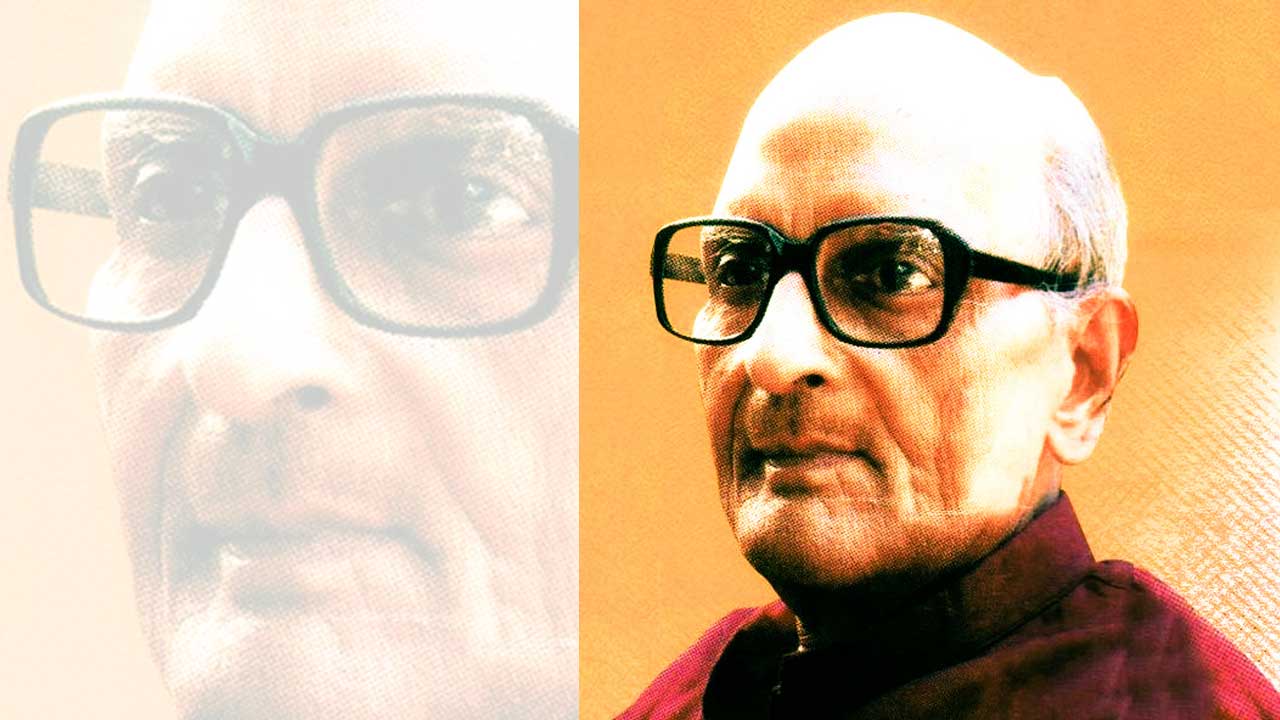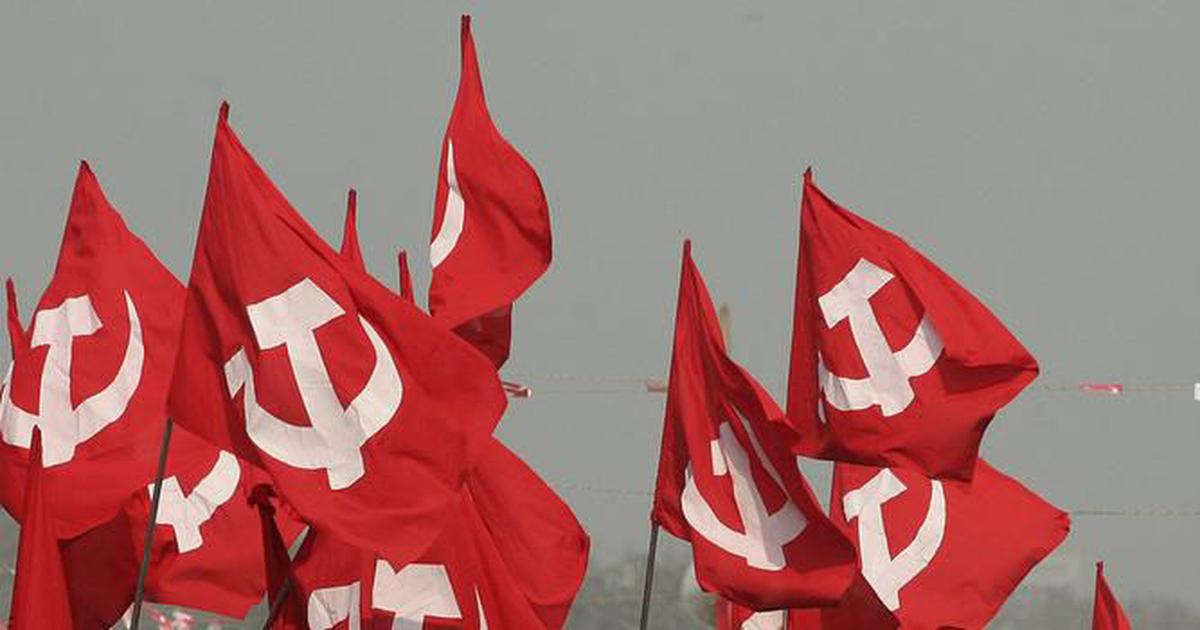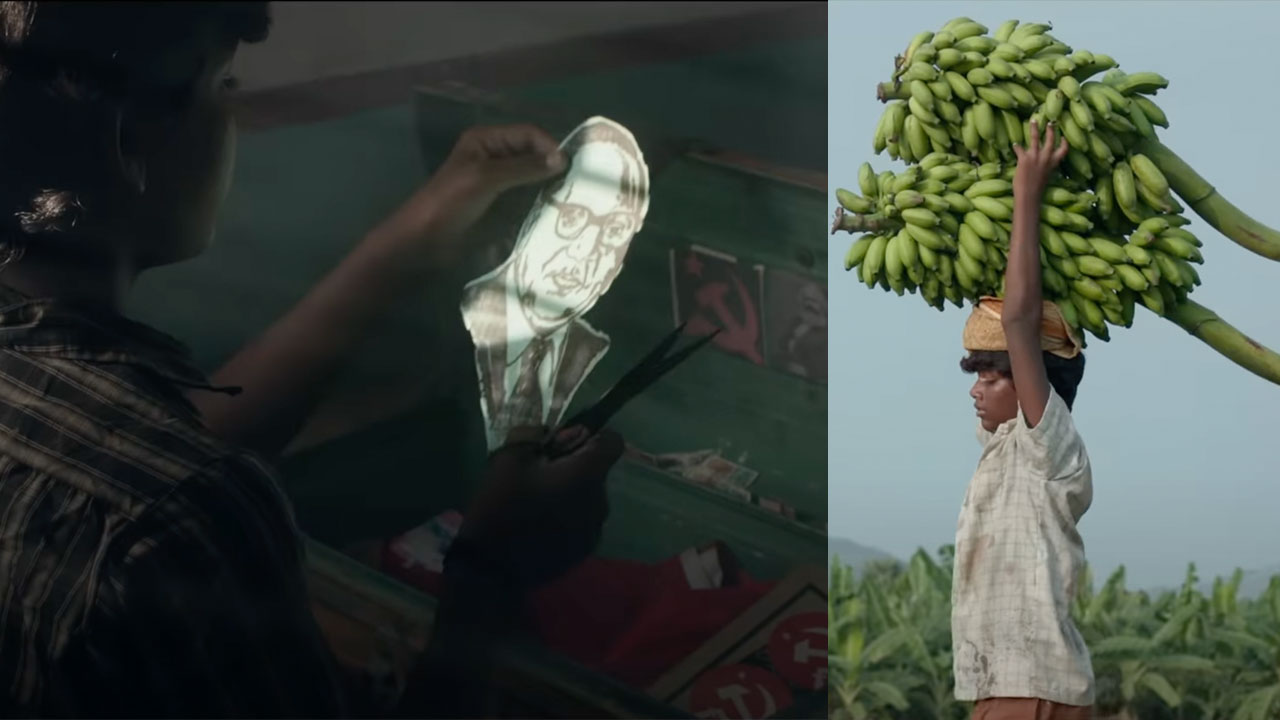Parampara Ka Mulyankan is one of Dr Ramvilas Sharma’s books. It begins thus: “Those who want to usher in a new era in literature, those who don’t want to tread the beaten path, those who want to break free from dogma and create revolutionary literature – for them, an understanding of literary tradition is of utmost necessity.” There is little doubt that an understanding of literary tradition or literary history is important for the creation of literature. It is even more so the case for literary criticism. There are many litterateurs who have critically evaluated literature without knowing its history. They include Ramchandra Shukla and Babu Shyamsundar Das – so much that on many occasions they have managed to put themselves in a laughable situation. For instance, there is this sakhi by Kabir, “Meetha khan madhukari bhanti bhanti ko naz. Dawa kis hi ka nahin, bin bilaiti bad raj.” Explaining its meaning, Babu Shyamsundar Das writes in Kabir Granthavali, “Christianity hadn’t entered India in his (Kabir’s) times but the word ‘bilait’ appears once in his verses – ‘bin bilait bad raj’. It cannot be said with certainty whether by “bilait” Kabir meant a European country or a foreign nation.” Had Babuji read history, he would not have bungled so embarrassingly. He would have known that “Vilayat” means the area under the jurisdiction of a “Vali”. Vali is an Urdu word which means a saint or a friend of god. Vilayat’s etymological roots are in the word “Vali”. As for Acharya Ramchandra Shukla, his ignorance of history is so monumental that if I were to talk about it here, there would be no place left for Ramvilas Sharma. What we will now see is how much of Ramvilas’ critical works are valid in terms of history and tradition. 
Parampara Ka Mulyankan is a compilation of essays by Dr Ramvilas Sharma. It has no essay on Kabir. As far as my limited knowledge goes, he hasn’t written a single essay on Kabir. He hasn’t written an essay on Meera either. This means that he has completely ignored the Dalit and women sants of the 15th-century sant tradition. But the compilation includes three essays on Tulsidas, his favourite poet. He has done a lot of work on Nirala, too, and coincidentally, Tulsidas is Nirala’s favourite poet, too. Why did Ramvilas not work on Kabir? This is an obvious question, although it is not mandatory for everyone to write on Kabir or it is not that one cannot be called a writer unless one has written on Kabir. But this question comes to mind as he himself has theorized that the knowledge of tradition is of utmost necessity for those wishing to produce epochal literature. Ramvilas was a writer who wanted to usher in a new era in literature. Then, how could he ignore Kabir in Parampara Ka Mulyankan? Did he think that understanding Kabir was not relevant for writing epochal literature? Can a new era be ushered in by embracing Tulsi and shunning Kabir? But Ramvilas “evaluated tradition” only to establish Tulsidas. He knew that Kabir neither accepted a Brahmin as his guru nor did he believe that the Brahmins were supreme. In contrast, for Tulsidas, a Brahmin was a guru and a higher, supreme being. Kabir’s knowledge tradition is opposed to the Vedas while Tulsidas is a poet in the Vedic tradition. Kabir rejects the Varna system, Tulsidas seeks to strengthen it. Ramvilas knew very well that accepting Kabir would be tantamount to rejecting Tulsi. He could not have had both of them. Hence, he rejected Kabir and praised Tulsi. In fact, he overturned the knowledge tradition to prove that Tulsi was an epoch-maker and much superior to Kabir. In Tulsi Ki Bhakti, he writes, “It is impossible to connect with the tradition of Hindi literature without Tulsidas.” No one could gather the courage to ask him whether it was possible to connect with the tradition of Hindi literature without Kabir. About Tulsi, he writes, “Whatever in this tradition is valuable, whatever is important, whatever is worth preserving, can be found in Tulsi and that too, in ample supply. This fact underlines the unbeatable brilliance of Tulsi and shows that no one can become an epochal poet by disregarding him.” It is clear that Ramvilas has wrongly evaluated the tradition just to prove Tulsi’s greatness.
In fact, all the Brahmin critics of Kabir and Tulsi, and they include Hazariprasad Dwivedi, are not as comfortable with Kabir as they are with Tulsi. Kabir’s rejection of the Vedas, the Brahmins and the Varna system created turmoil within them. They could not put up with the Brahmin within them losing a battle. They had two options – accept Kabir or reject him. Most of the Brahmin critics chose the middle path. They neither accepted Kabir nor rejected them. They sought to underplay Kabir’s revolutionary consciousness by describing them as a mystic and by associating his philosophy with the Advaita of Vedant. Some critics like Ramchandra Shukla described Kabir as lowly and rustic and thus pandered to the anger seething within them. Ramvilas is sailing in the same boat. He is already lying prostrate before Tulsi. In his view, “Kabir is a great Bhakta [devotee]” but Tulsidas is an erudite poet – so erudite that he has no equal. This is Ramvilas’ evaluation of tradition, which turns the knowledge tradition on its head. He turns the devotee into a saint and a saint into a devotee. Tulsidas is a Bhakta and is an ardent supporter of the Varna system, so he is a saint and that too, a people’s saint. Kabir is a saint who stands with the common man, so he is turned into a devotee. There is an essay titled “Tulsi Sahitya Ke Samant-Virodhi Mulya” in the compilation. This essay shows what pains Ramvilas took to prove that Tulsi stood with the common man. He transferred all the specialties of Kabir to Tulsi. To prove that Tulsi was a great scholar and a revolutionary poet, he has overturned the knowledge tradition of the Bhakta. To begin with, he demolished the Sant tradition to which Kabir belongs. There are two sant traditions. The sants of the first tradition were free from the slavery of the Vedas and the Brahmins while those of the second tradition were slaves to the Vedic tradition then just as they now. In Ramcharitmanas, Tulsidas contends that “Vipra pad prema” and “Dwij pad preeti dharm janyitri” are essential features of a sant. Ramvilas mixed the two traditions in such a way that those who were against the Vedas turned pro-Vedas and Tulsidas became the greatest sant among them.

To prove that Tulsidas was an epoch-making poet, he crafted a perverse definition of sant, which can be found in his essay “Sant-Sahitya Ke Adhyayan Mein Samasyayein”. The Nirgun and Sagun sant traditions are different and distinct but studying them becomes a problem when Nirgun is seen from the Sagun perspective and Sagun is seen from the Nirgun perspective. If the Nirgun Sant tradition is seen from the Nirgun perspective, the award for epochal poet will go to Kabir, and not to Tulsi. So, Ramvilas Sharma fashioned an imaginary problem in studying the sant tradition and concluded that while Kabir is fearless and defiant, Tulsi, Sur and Jayasi are poets of love and compassion who believed in human equality, and among them, Tulsi’s poetry has elements of anti-feudalism. The way he has distorted history can be seen from the beginning to the end of his essay “Sant-Sahitya Ke Adhyayan Mein Samasyayein”. Not many instances can be quoted in this short piece but I would like to quote one. Discussing “Sant Kaun The” (Who was the saint?), he writes, “The Sant literature was born of the circumstances prevailing in the daily life of the Indians. It would be wrong to look for its source in Buddhism, Islam or Hinduism. These religions did influence it but they were not its point of origin. Neither Malik Muhammed Jayasi was a commentator on Quran nor Kabir or Dadu were scholars of the Tripitaka, nor Sur and Tulsi wrote commentaries on Vedas, Geeta or Manusmriti. Sant literature has its own peculiarities, which are not sourced from any ancient religious text.”
This seems to be the perfect definition. But it is not. Ramvilas’ only objective behind fashioning this definition is to absolve Tulsi of the charge of being a Manuvadi. That is why he lumps the Sagun and the Nirgun sants together. Thus, he not only ignored history but one may even say that he was a closet Hindutvavadi. The historical truth is that the circumstances of life which he talks about were rooted in Islam. Kabir, Raidas and Dadu were the products of Islam. If Islam hadn’t entered India, we wouldn’t have had Kabir, Raidas or Dadu.
It was to counter the Nirgun revolution of Dalitbahujan sants against perceived superiority of Brahmins and the Varna system that the Brahmin sants initiated the stream of Sagun Bhakti. Whether it was Ramananada or Vallabhacharya, the Ashtachap poets or Tulsidas – they all endeavoured to save the Vedas, Puranas, Smritis and the Varna system from being blown away by Nirgun. The entire poetry of the Sagun poets is designed to preserve and establish Brahmanism. Ramvilas’ Hindutvavadi interpretations cannot change this truth. At one place, mixing up Kabir and Tulsi, he writes, “Among the people, the most oppressed classes were Dalits and women. A poet like Tulsi was bound to be sympathetic towards them.” What can be a bigger lie than saying that Tulsidas was a protector of the interests of the women and the Untouchables? In his view, “Tulsi’s specialty was that he portrayed the ideal character of Ram to actively oppose injustice.” As part of a well-thought-out strategy, he doesn’t mention the fact that Tulsi established Ram as god. How could Ramvilas have forgotten that Ram was a king and his rule is called Ramrajya! If Ram was an ideal, his rule must also have been an ideal. What a forked tongue! How can Ramvilas support socialism and Ramrajya in the same breath?
In his essay “Parampara Ka Mulyankan”, Ramvilas concludes that the “Socialist culture does not break off from the old culture”. What does this mean? Should socialist culture continue to keep ties with feudal culture? Doesn’t this mean that those who have faith in socialism can also continue to uphold the Varna system? Isn’t this a conspiracy to link socialism with Hindutva? Some may think otherwise but Dalitbahujan thinkers don’t. And that is why socialists are failing and revivalist forces are gaining ground. And if this is happening in the fields of thought and literature, to a great extent, Ramvilas and his closet Hindutva are responsible for it. That is why he does not consider Kabir but Tulsi as the poet of the oppressed majority. In “Hindi Jati Ke Sanskritik Itihaas Ki Rooprekha”, he writes, “The pain of the majority of the oppressed farmers of India and their ability to fight for a better life finds expression in Indian literature, mainly in the poetry of Tulsidas.” Further, he adds, “Tulsi’s Ramcharitmanas is an unparalleled religious epic of the world.”
Note the word “religious”. Ramcharitmanas is a religious book and that too, of the Hindus. Needless to say, how dangerous Ramvilas’ Hindu agenda is for the socialist ideology! What was the religious agenda of Tulsi and what is the socialist thinking of the tradition Ramvilas chooses to ignore? It is necessary to know the difference between the two traditions. The aesthetics of socialist thinking of Kabir-Raidas is “Babhan ko mat pujiye, jo ho gun se heen / pujiye charan chandal ke jo ho gyan praveen”. In a counter-revolution, Tulsi issues a religious diktat: “Pujiye bipra seel hun heena, nahin sudra gun gyan praveena.” How sad it is that Ramvilas is standing with socialism but with Brahmanical aesthetics!
In “Tulsi Ki Bhakti”, Ramvilas writes, “Tulsi’s Ram is a friend of the meek. Tulsidas’ Bhakti is closely related to social oppression. It arouses a feeling of self-respect among those who seek doles from the kings, the landlords and the rich. Tulsidas tells such people to ask Ram. He will give you everything. Don’t go to men with a begging bowl. Faith in Ram frees them from the slavery of men.” What kind of socialist ideology is this which stops human beings from fighting and asks them to seek things they want from Ram and thus be dependent on him? If freedom from slavery of human beings lies in Ram, then there is no need for any struggle. No need to fight against the system. No need to blame the capitalists. You have to just pray to Ram and you will get food to eat, clothes to wear and a house to live in. Ram had taken incarnation for the protection of the Brahmins and the cow. Then, how can devotion to him be the path to socialism? But Ramvilas believes that it is so. In “Tulsi Sahitya Ke Samant-Virodhi Mulya”, he writes, “Tulsi’s Bhakti was not opium for the masses. It was a means for awakening the people.” Ramvilas knew that Marx had described religion as the opium of the masses. Lest someone associate Tulsi’s Bhakti with opium, he made it clear that it was not so at all. If Ramvilas is right, then those organizing the Akhand Path of Ramcharitmanas will be considered socialists. Which awakening of the people is he talking about?
In fact, Ramvilas’ “evaluation of tradition” is a ruse for establishing Hindutva in the name of socialism. Ramvilas doesn’t spare a glance at the historical stream that rose in resistance to Brahmanism and the Varna system. Dr Ambedkar had warned the communists of his times that they wouldn’t be able to unite the workers without fighting Brahmanism. But the constant refrain of the Indian communists was that capitalism would trigger a class struggle and class struggle would annihilate caste. However, caste survives to this day. Ramvilas was among socialist thinkers who loathed the Dalit movement and Dalit literature. I would like to quote from what he said in some of his interviews. These interviews by Ajay Tiwari, have been compiled in Aaj Ke Sawal Aur Marxvaad. One of the interviews is titled “Aesthetics doesn’t change; aesthetic sense does”. Tiwari poses some excellent, probing questions to Ramvilas on the issue of Dalit consciousness. Ramvilas says that aesthetics doesn’t change, aesthetic sense does. Look what a Marxist thinker is saying! Isn’t it a basic premise of Marxism that everything is prone to change and that nothing is stagnant? And here is a Marxist telling us that aesthetics doesn’t change. Those not ready to change their tools of evaluation cannot hope to bring about any transformation in society. Ajay Tiwari asks a very relevant question: “You felt the need for a new aesthetics for Nirala, for Nagarjun. Isn’t a new aesthetics needed for Kabir?” Ramvilas’ answer to this question is patently laughable. “It is said that Kabir could have written what he wrote only on the basis of his experience. Shakespeare wrote about murderers. So, apparently, either he must have lived among murderers or he must have committed murders himself.” This answer resonates with what Namvar Singh used to say about Dalit Literature: “Will you have to become a horse to write about a horse?” They do not even have proper, cogent arguments to express their distaste for Dalit thought. This is pure sophistry. Further, Ramvilas says, “The caste system cannot be the weapon for ending the caste system. Only class can end the caste system. Hence, people should unite on the basis of class and not caste.” We all want the poor to unite on the basis of class. But that is not happening. Why? You will water the tree of religion, you will idolize Ramcharitmanas and you will tell the Dalitbahujans to unite along class lines. Ramvilas could only have fooled people, and he did that.
Ajay Tiwari asks whether caste oppression isn’t a reality. Ramvilas replies, “The oppression based on caste is secondary.” Ajay Tiwari could have protested. But he didn’t. That was because he also was a Brahmin. Had he been a Dalitbahujan, he would have countered that no one is abused by calling him a Brahmin. Bhangi and Chamar are the abusive words. Brahmins are not humiliated in society, Dalitbahujans are. Brahmins can get a rented accommodation easily. Dalitbahujans face problems. It is not poverty that hurts the Dalits, it is social humiliation.
This interview also shows how rabidly anti-Dalit Ramvilas was. Disagreeing with Ramvilas, Ajay Tiwari raises a very pertinent question – “Dalits were kept away from education and culture. And this situation persists to a great extent even today because that old structure still survives and capitalism has not solved their problems … so the art of those who were associated with education and culture cannot be the art of those who were deprived of education and culture. Thus, how can you evaluate the likes of Kabir and Raidas, who were kept away from education and culture, and Tulsidas and others, who benefited from education and culture, on the same scale? For, if the same scale is used, Tulsidas will certainly prove a greater poet.” I am surprised that Ramvilas did not answer this important question. He didn’t have an answer. So he just ducked the question. His Brahmanism could not have accepted Kabir and Raidas. But dissatisfied with his answer, Ajay Tiwari says, “Tulsidas has severely condemned the Dalits or the Shudras – so much so that [Ramchandra] Shukla has also taken notice of it.” Although Ajay Tiwari has not described how Ramvilas reacted to his remark, I can imagine him seething with anger. Had he done that, he would have got trapped. So, he chose not to answer and like shrewd politicians, changed the subject. In reply to another question by Tiwari, he says, “As a poet, Kabir was not as great as Tulsidas.” At another place, he says, “It is due to Vedant that we find Kabirdas, Tulsidas and Surdas on the same plane.” So, this was his “evaluation of tradition”. He turned Kabir into a Vedanti. And as far as Vedant goes, Tulsi was definitely greater because Kabir was not on the same plane.
There is another interview titled “Parampara ateet ka punarjagran nahin, ateet se pragati hai”. This is also a conversation between Ajay Tiwari and Ramvilas Sharma. Ajay Tiwari poses a very pointed question to Ramvilas, who is deeply enamoured of the past: “But moving towards Vedant and Bhakti is also moving backwards?” Ramvilas’ answer to this question makes me pity him. He says, “We are responsible for this. India’s Janwadi Andolan [pro-people movement] is responsible for it.” This is not the correct answer. The answer should have been that our brahmanical mindset is responsible for it. But Ramvilas could not have given this answer for he was tied to the peg of the Vedas and Brahmanism. If only he was free! That is the reason why despite writing numerous books, he could not give a classic to the world of Hindi literature. On the other hand, Rahul Sankrityayan wrote a dozen-odd books but all of them are classics that show the right path to the people. That was because Rahul Sankratayan was free from the shackles of the Vedas and Brahmanism.
(Translation: Amrish Herdenia; copy-editing: Anil)
Forward Press also publishes books on Bahujan issues. Forward Press Books sheds light on the widespread problems as well as the finer aspects of Bahujan (Dalit, OBC, Adivasi, Nomadic, Pasmanda) society, culture, literature and politics. Contact us for a list of FP Books’ titles and to order. Mobile: +917827427311, Email: info@forwardmagazine.in)
The titles from Forward Press Books are also available on Kindle and these e-books cost less than their print versions. Browse and buy:
The Case for Bahujan Literature
Dalit Panthers: An Authoritative History






